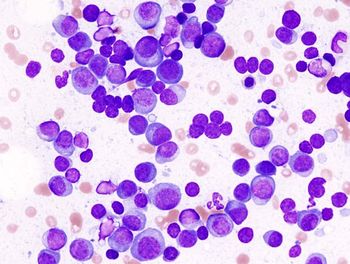
Lung Cancer Survival Improves Despite Biomarker Testing and Screening Gaps
Despite gaps in biomarker testing accessibility, the lung cancer survival rate has improved by 26% over the last 5 years.
The American Lung Association’s 2024 State of Lung Cancer report reveals that biomarker testing gaps and low screening rates for lung cancer hinder lung cancer survival, with a call for all states to implement policies to ensure biomarker testing is included in insurance coverage, according to a news release from the American Lung Association.1 Despite this shortcoming, the report also observed that the lung cancer survival rate has improved by 26% over the last 5 years.
The 2024 State of Lung Cancer report evaluated nationwide US insurance coverage of lung cancer biomarker testing in an effort to assess cost barriers to patients who may benefit from its use. Notably, the report found that 30 states and Washington D.C. do not require coverage of biomarker testing, with 15 states requiring all plans to cover it, and 5 states requiring some plans to cover it.
“More people with lung cancer are living longer, and that is something to celebrate. However, lung cancer is still the leading cause of cancer deaths in the US,” Harold Wimmer, president and chief executive officer of the American Lung Association, said in the news release.1 “This year’s ‘State of Lung Cancer’ report provides a path for states and the federal government to take to improve the lives of people living with this devastating disease. Increasing lung cancer screening rates and expanding biomarker testing are enormous opportunities to catch cancer earlier and provide the best treatments for people diagnosed with the disease.”
The report also found that 16% of eligible patients were screened across the US in 2023, with Rhode Island at 28.6% and Wyoming at 8.6%, despite tests helping to identify biomarkers that may help inform effective treatment options. Furthermore, the report contrasted the average 5-year survival rate for lung cancer at 28.4% with the 5-year survival rate for lung cancer identified at an early stage at 64%. The report also outlined that only 27.4% of cases were diagnosed at an early stage vs 43% identified at a late stage, with a 9% 5-year survival rate for those with late-stage disease.
Furthermore, the report outlined the use of surgery in early-stage lung cancer. Notably, of patients with early-stage cancer, 20.7% received surgery, with a decrease of 2% noted in 2021 in light of the impact the COVID-19 pandemic made on medical practice.
The report also explored the reasons why patients go untreated even after diagnosis, showing that 20.9% of patients received no treatment. Additionally, the report stated that people of color were less likely to be diagnosed early, alive after 5 years, and receive surgical treatment, while being more likely to not receive treatment.
In addition to advocating for all states to adopt policies ensuring biomarker testing is included in insurance coverage, the American Lung Association also appealed to Congress to pass the Increasing Access to Lung Cancer Screening Act (H.R. 4286), which, if passed, would cover lung cancer screenings across multiple insurance types for recommended patients.2
“This bill provides for coverage without prior authorization requirements of annual lung cancer screenings under Medicaid, Medicare, and private health insurance for individuals for whom screenings are recommended under US Preventive Services Task Force guidelines,” a summary of the bill read.2 “It also expands Medicaid coverage of counseling and pharmacotherapy for cessation of tobacco use to all individuals, rather than only pregnant women.”
References
- New report: lung cancer survival rate improves, but gaps in biomarker testing and lack of screening hinder progress. American Lung Association. November 19, 2024. Accessed November 22, 2024. https://tinyurl.com/4c7dtzvr
- US Congress. H.R.4286 - Increasing access to lung cancer screening act. Revised June 22, 2023. Accessed November 22, 2024. https://tinyurl.com/mt6ws9ec
Newsletter
Stay up to date on recent advances in the multidisciplinary approach to cancer.

















































































